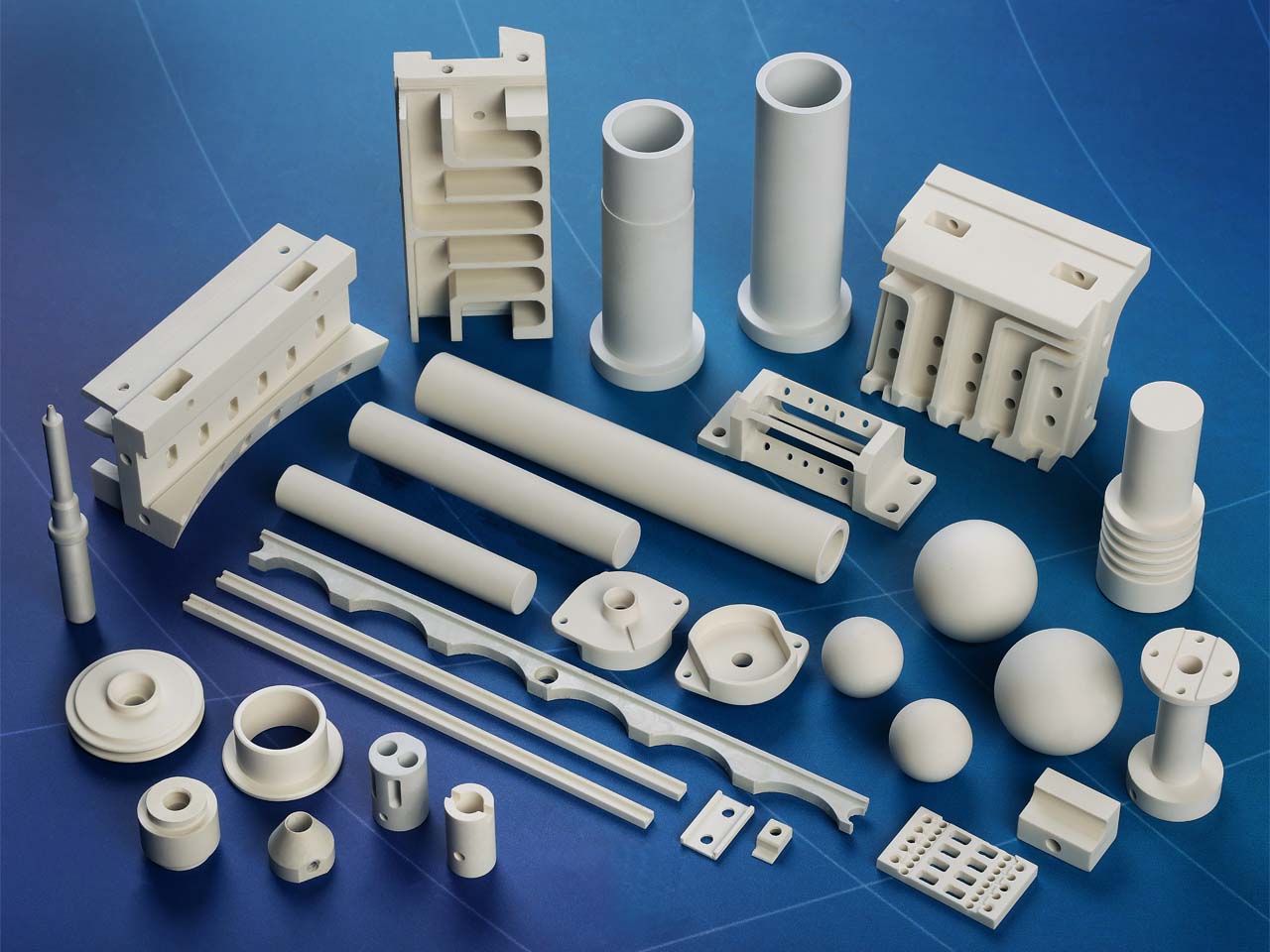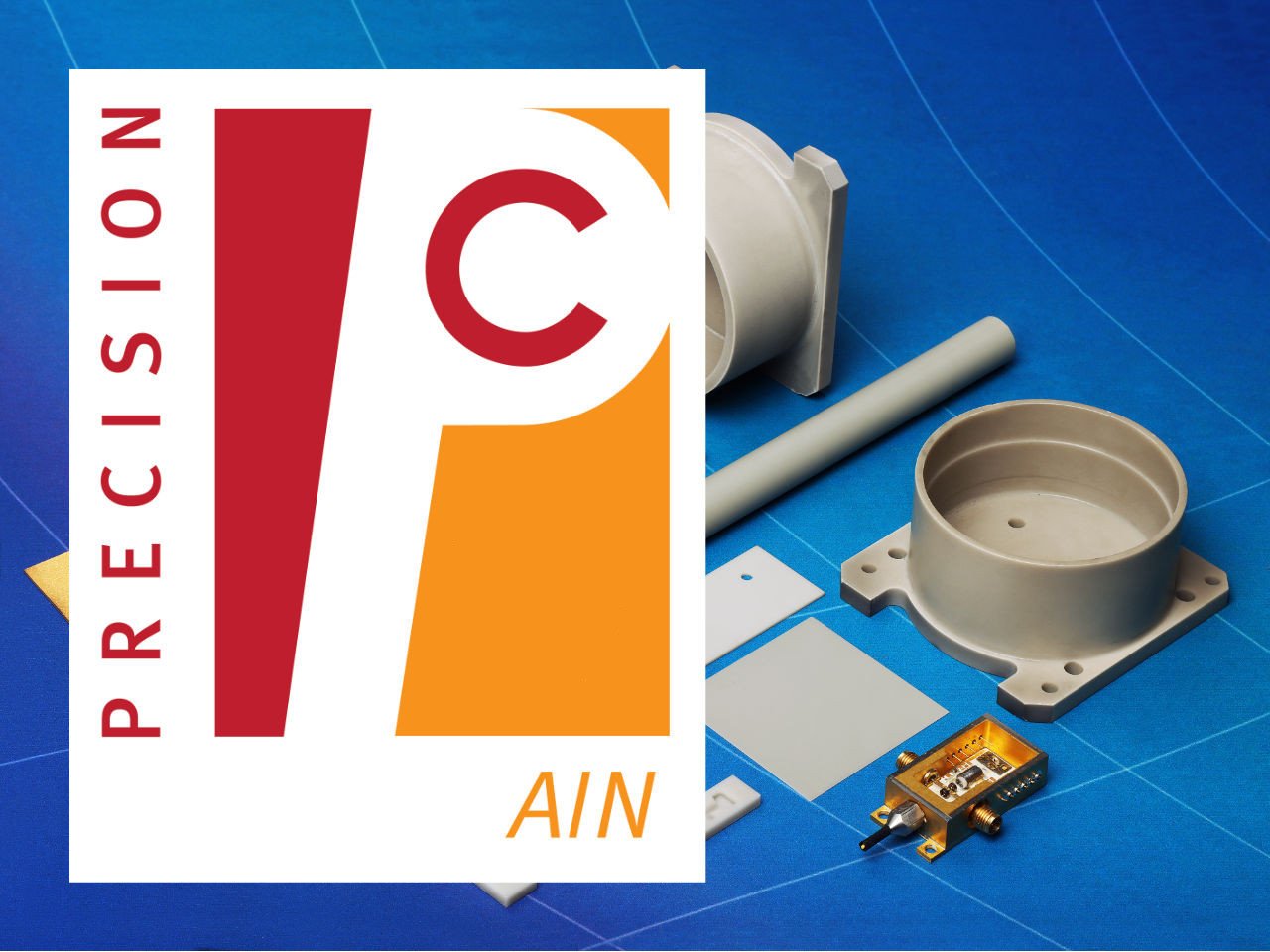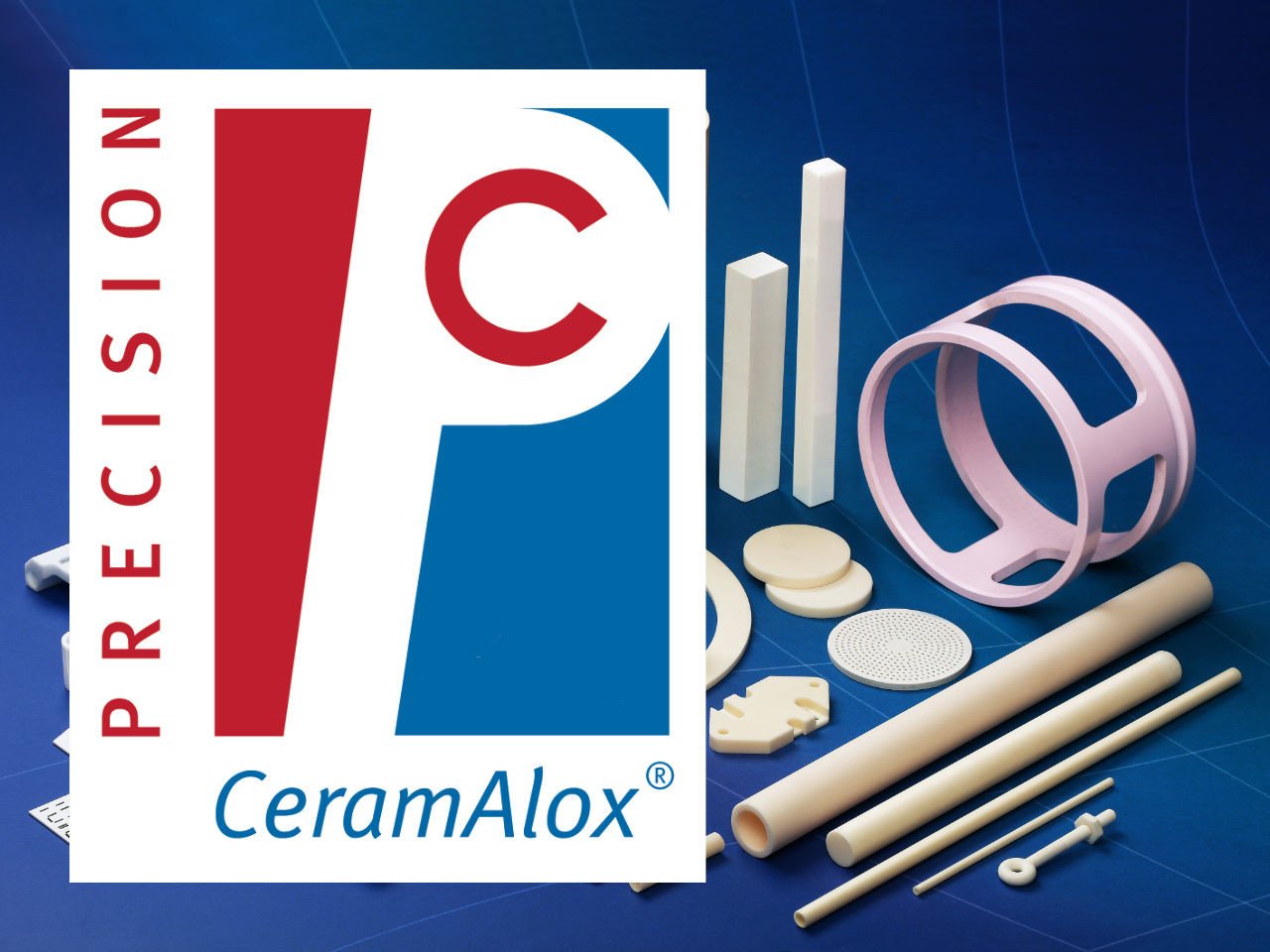The use of ceramics in high thermal conductivity applications is a growing specialized market. Oxide ceramics are the most common base materials. But the majority of them are limited to 26-30 W/mK which, when compared to the two most common high thermal conductivity metals, copper around 385 W/mK and aluminum around 150-185 W/mK, leaves a large gap.
The goal is to increase the thermal conductance while retaining the other key feature of ceramics, electrical insulation.
Recent developments in alumina have increased the thermal conductivity in some grades up to 39 W/mK, still far short of commonly used metals, but a significant increase from its base level.
Ceramic materials that are selected to reach toward this higher thermal conductance are a specialized group. All have their own strengths and weaknesses and not all offer the key property of electrical insulation.
Let’s look at four contenders, including Boron Nitride, Aluminum Nitride (AlN) composites, Beryllium oxide, and Aluminum Nitride. The first contender is Shapal Hi-M Soft, a composite of Aluminum Nitride and Boron Nitride, which gives a significant increase in thermal conductivity, over 92 W/mK, and improves the electrical insulation. The combination of these two materials also brings a second benefit to the material, its machinability. It does not require diamond tooling to machine. But achieving this machinable Aluminum Nitride / Boron Nitride composite requires hot pressing, which limits the available size of the material.
Boron Nitride, another hot-pressed material, is also machinable, and is available in larger pieces. Plus there are many grades available. But only the highest purity can match the machinable AlN / Boron Nitride composite for thermal conductance and, in some cases, can outperform it. The high Purity grades are mechanically weaker and softer than the machinable Aluminum Nitride / Boron Nitride composite.
Beryllium Oxide has been the material of choice for some high-end projects for many years. This material has a thermal conductivity of 285 W/mK, good electrical insulation, and as an oxide ceramic has none of the specialized nitrogen furnacing requirements of Aluminum Nitride. The main drawback is the health and safety requirements associated with this material, resulting in only specialized applications tending to use it, such as in military-type requirements.
Aluminum Nitride (AlN) tends to be used mainly in substrate form, as the next step up from Alumina substrates. Most of the world’s production of AlN is in this form. The thermal conductivity of AlN depends on grade and quality. The industry standard tends to be 170-180 W/mK, with lesser grades down to 150 W/mK, and ultra-high purity up to around 220 W/mK. AlN components in a 3D geometry are far less common. Many engineers prefer to use a machinable Aluminum Nitride composite, especially in initial design phases, but often also in production volumes as well, even though it has lower thermal conductance.
If you want the highest thermal conductance and have really deep pockets, then at over 2000 W/mK, synthetic Diamond is for you. But your thermal conductance requirement would have to be of an extreme nature.
The below table compares the thermal conductivity of 3 electrical insulators (Aluminum Nitride, Shapal, and Alumina) and 2 electrical conductors (Aluminum and Copper):
| Compound | ID | Thermal Conductance |
|---|---|---|
| Aluminum | Al | 225 W/mK |
| Copper | Cu | 380 W/mK |
| Aluminum Nitride | AlN | 170 W/mK |
| Shapal (Machinable AlN) | Al/BN Composite | 92 W/mK |
| Alumina | Al2O3 | 26 W/mK |
Find more information about Shapal Hi-M Soft, Aluminum Nitride, Boron Nitride, and Alumina.
Related Pages

Shapal Hi M Soft™
Machinable AlN
Shapal Hi M Soft is a hybrid type of machinable Aluminum Nitride (AlN) ceramic that offers high mechanical strength, electrical insulation, and thermal conductivity.

Aluminum Nitride
CeramAlum™
Aluminum Nitride (AlN) is an excellent material to use if high thermal conductivity and electrical insulation properties are required -- an ideal material for use in thermal management and electrical applications.

Alumina
CeramAlox™
Alumina,is a hard wearing advanced technical ceramic material with strong electrical, mechanical, and thermal properties and suitable for a variety of applications. Alumina is also suitable for metallising and joining to provide hermetic seals.

Thermal Conductivity
Thermal conductivity measures how easily heat is transmitted through a material. There is a growing specialist market for advanced ceramics use in applications with high thermal conductivity requirements.





